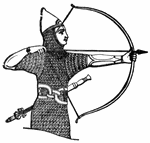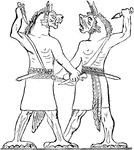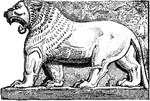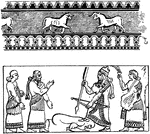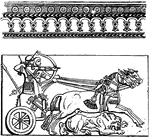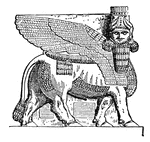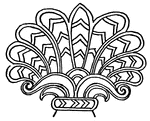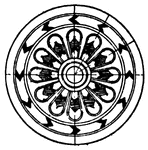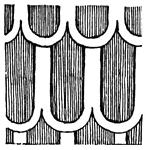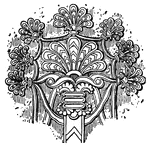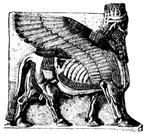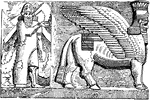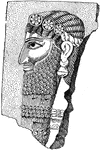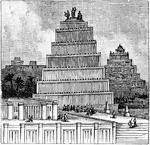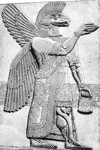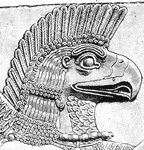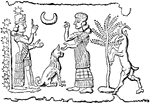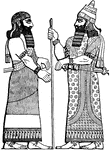
Assyrian Princess in Full Dress
In ancient Assyria, princes, princesses, and priests vied with each other in luxury.
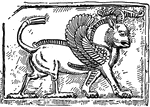
Assyrian Relief Sculpture
The griffin, a monster with a lion's or panther's body and the head and wings of an eagle, played an…

Assyrian Soldiers Fighting
A depiction of two soldiers fighting for Assyria, using bow and arrows against their enemies.
An Assyrian Statue
"The king, a rude heroic figure, stands upright before the god. He holds a club in the left hand, in…

Babylon
"Babylon is said, by some writers, to have owed its foundation to Queen Semiramis, a person whose history,…

Babylonia Poster
A poster of ancient Babylonia: Chaldea, Assyria, Persia, soldiers, religion, writing, and structures.
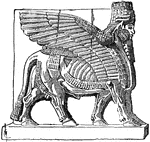
An Assyrian Winged Bull
Also known as a Lamassu. An ancient tutelary deity, often considered to be female.
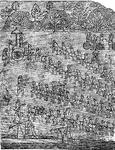
Winged Bull
An ancient Assyrian wall relief, depicting the symbol of a winged bull with the head of a human male.
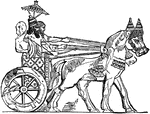
Assyrian War Chariot
"The stalwart character and aggressive bearing of the Assyrians were particularly shown in war. The…

Assyrian Fringe
"Assyrian Fringes, from ancient bas-reliefs. Fringe: an ornamental bordering formed of short lengths…

Assyrian Fringe
"Assyrian Fringes, from ancient bas-reliefs. Fringe: an ornamental bordering formed of short lengths…
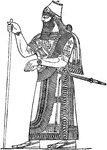
Assyrian King
"The Assyrian physiognomy, as determined by the sculptures exhumed from the ruins of Nimrud and Khorsabad,…

Assyrian Lion
The Assyrian Lion is on a glazed clay slab at a royal palace in Khorsabad, Assyria during the 6th century…

Assyrian Lion
A wall relief of the ancient Assyrian lion. These sculptures were placed in doorways as protective entities.

Miletus Coin
"A representation of a very early double stater of Miletus, in Ionia, of which the type is the lion's…

Assyrian Mule
The animal life of Assyria was extremely varied. This image depicts a mule from this area.
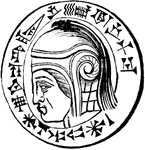
Nebuchadnezzar
"The most illustrious of Babylonian kings, was the son of Nabopolassar, the general of the Babylonian…
